
By clicking “Accept All Cookies”, you agree to the storing of cookies on your device to enhance site navigation, analyze site usage, and assist in our marketing efforts Cookies Policy.
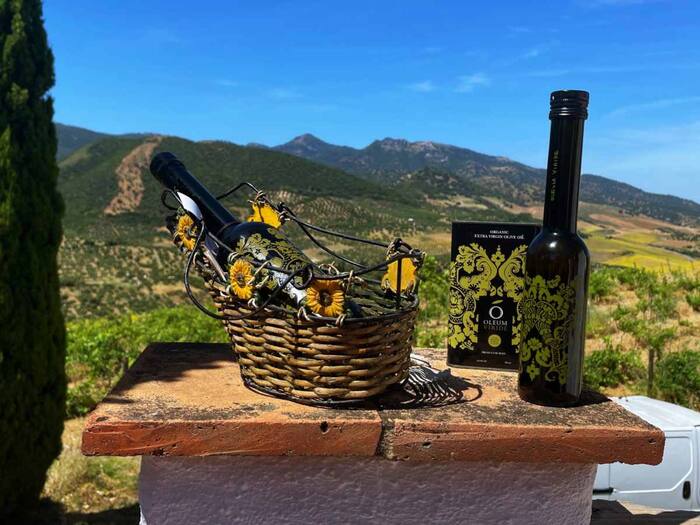
Traditional farming methods ensure superior olive quality with careful cultivation and extended maturation, resulting in rich flavours, and higher polyphenol levels.
The Andalusian sun beat down on the endless rows of olive trees as our car steered from Marbella towards Zahara de la Sierra. Nestled amongst the rolling hills, this whitewashed town is renowned for its liquid gold: olive oil. A self-proclaimed EVOO (extra virgin olive oil) devotee, a trip to Oleum Viride was a no-brainer. After all, their oil had graced my Amazon cart in the past, and the first drizzle onto my pan had spoken volumes about its quality. I was eager to see the source of this culinary magic. Stepping off the dusty road, I found myself before a whitewashed simplicity, distinguished by stone-edged arches, squat square doors with rough-hewn wooden planks and peeking arched windows. From a higher vantage point, cascading vines infused the scene with distinctive character. Whereas on the inside, rustic elements like weathered barrels and warm wooden furnishings created a winsome jumble. A table overflowing with an enticing display of olive oils and fresh bread for dipping promised a sensory adventure.
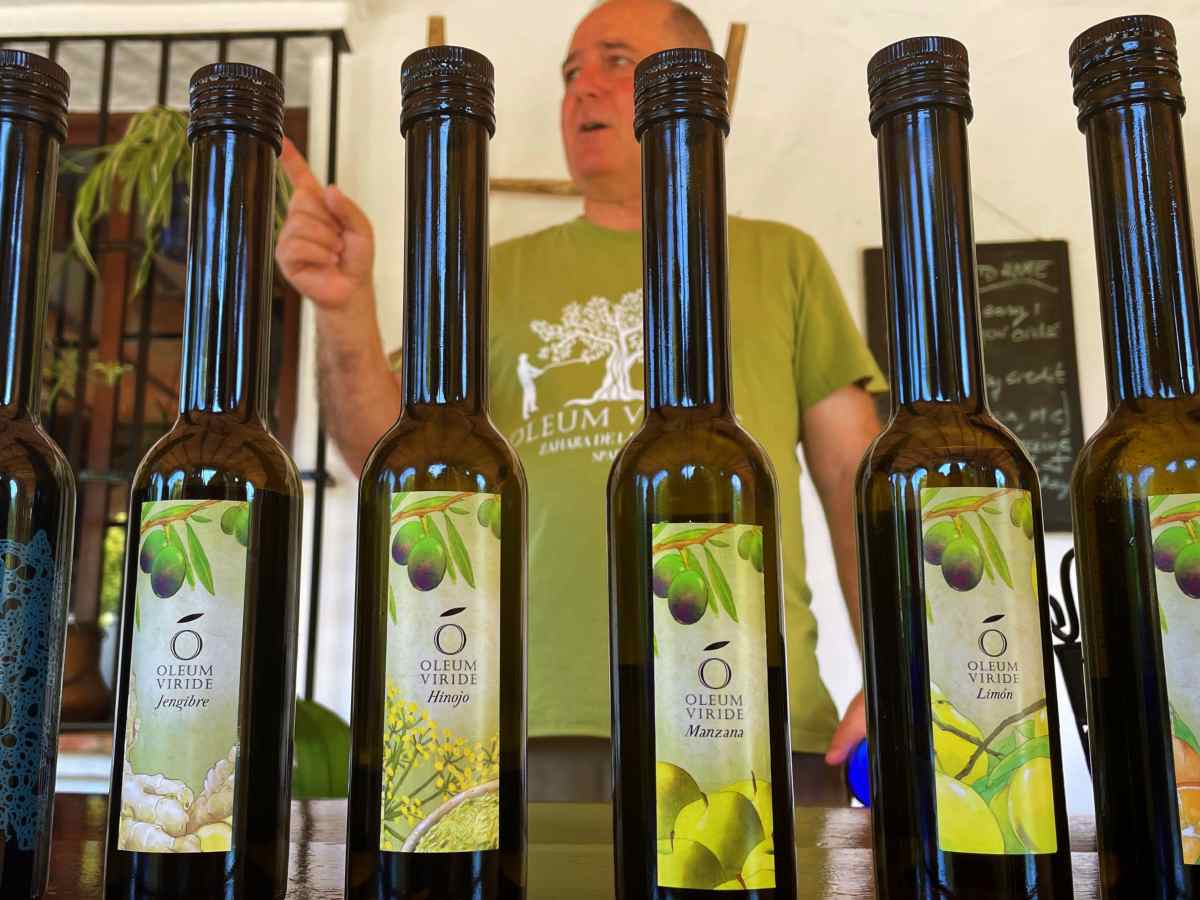
Photo By Veidehi Gite
Luis Lucero, the owner, emerged from his Almazara El Manzanillo – Latin for an olive oil mill. ”Welcome!” he boomed, his voice thick with a warm Spanish lilt “Let me first show you a special place.” I followed Luis along a dusty path until we reached a clearing. The view stretched across rolling hills, a seemingly endless expanse of olive trees, a breathtaking panorama that painted a vivid picture of Luis’s lifeblood – olive oil. With a sweeping gesture toward the rolling hills of Grazalema Natural Park, Luis Lucero explains the vital role his olive trees play. “Our crops are in traditional systems, not intensive or super-intensive like flat areas. We can’t use irrigation here in our hilly terrain, so our olive trees produce less than those in irrigated flat areas. We also can’t use machinery to pick olives; everything is done by hand, as shown on my T-shirt, with large sticks. Each kilo of olives and olive oil costs us more than in flat areas. Competing on price or volume is impossible for us. Instead, we focus on other values—organic farming, high-quality olive oil, special packaging, and infused, flavoured oils. We need to differentiate our products beyond price and volume.”
It all began 30 years ago when Luis, then a forest engineer, arrived in Zahara to work on the park’s conservation efforts. But fate intervened, and he met his wife Reyes, and Zahara became more than just a job. He says, “Since 2003, we have been developing this project based on sustainable concepts. The highest mountain here hosts one of the last fir tree forests in the Mediterranean, called Pinzapo. This forest is one of only three remaining in the Mediterranean and is a real treasure, which is why UNESCO declared it a World Heritage site. Olive trees in traditional crops help protect this special, wild area from human encroachment, acting as a buffer against roads, towns, and human activities. Our olive trees in the mountains provide not just economic benefits but also crucial protection for this invaluable forest, one of the last of its kind in the Mediterranean.”
In Spain, there are roughly 80 different types of olives. Some are used exclusively for table consumption, while others are only for olive oil. Certain varieties can be used for both, depending on market prices. Each type has a different percentage of oil content. If a variety yields less than 14-15% oil by weight, it is typically used for table olives. Varieties with oil content above 16% are designated for olive oil, with the highest percentages reaching up to 23%. Types with oil content between 13-16% can be used for either table or oil production, depending on the annual market prices.
“We primarily work with four types of olive trees: manzanilla, lechín, arbequina, and ojiblanca. In olive oil, like in wines, each type of olive produces a different type of oil, just as different grapes produce different wines,” says Lucero. When I asked which type of olives are the best, Lucero replied, “It depends on your taste, much like with grapes for wine. But in terms of quality, if you have fresh, healthy olives with no damage, a quick process from picking to oil production, and a clean system with no additives, you can produce the best olive oil in the world. The quality ultimately comes from nature and how you manage the production process.”
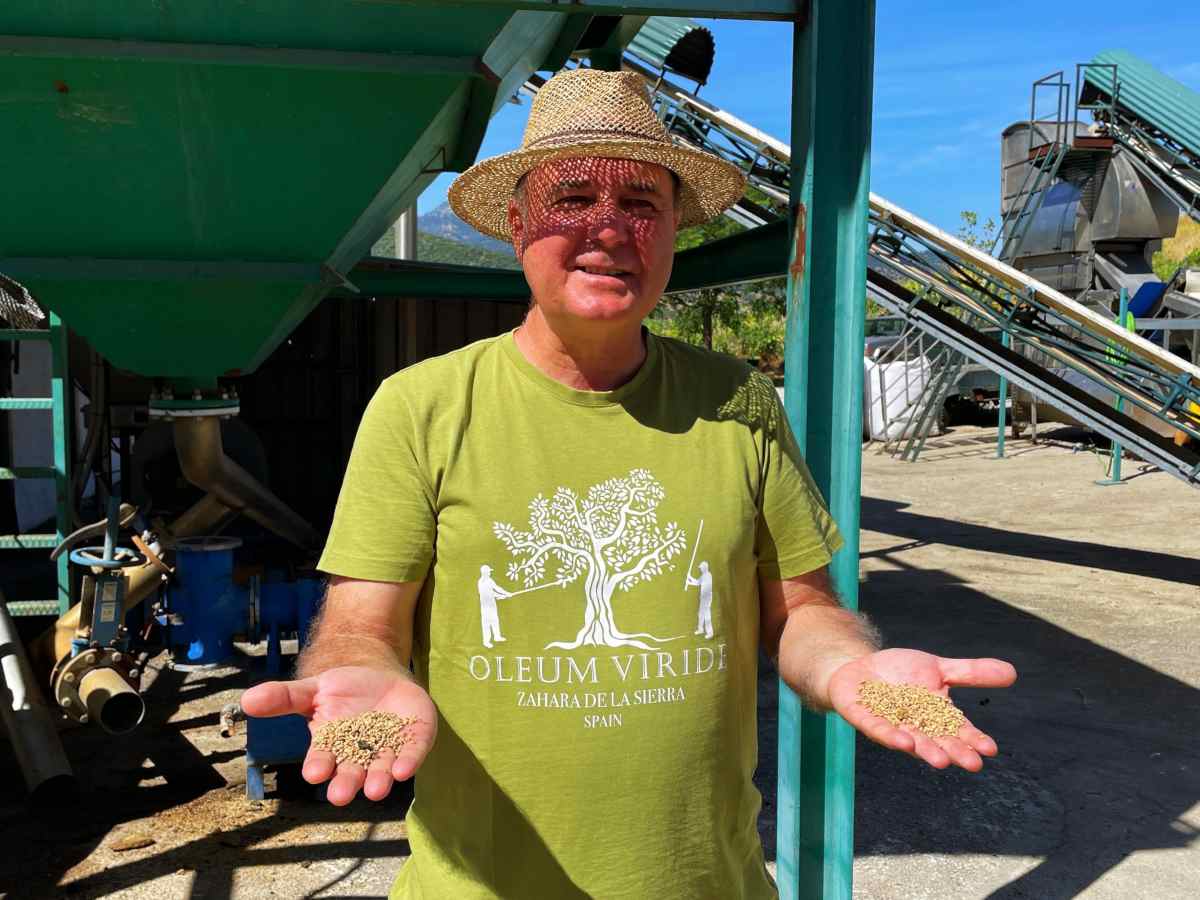
Photo By Veidehi Gite
Olive trees don’t require much water because they are very resilient, thriving in deserts, mountains, and even snowy regions. Lucero explains, “In traditional, non-irrigated crops, this resilience has an added advantage. Water stress leads to higher production of polyphenols, which are antioxidants beneficial to human health. In dry conditions, olive oil ends up with more polyphenols. We are a small factory, but we have an innovative project aimed at producing extra virgin olive oil with a high polyphenol content. By modifying some machinery and employing specific techniques in our cultivation process, we can protect and enhance the polyphenol content in our oil.” Lucero’s olive oil syndicate isn’t confined to a single grove. It presides over two locations: a mill just outside Zahara de la Sierra and another nestled in the mountainside.
These farms churn out a significant portion of the olives Lucero uses for his prized Oleum Viride label. The name itself is a fascinating choice, translating to green oil. “Green oil has a long history,” Lucero says. “The Romans introduced Acebuche olive cultivation to this region. In the second century after Christ, Gaditano, a Roman writer from Cadiz, authored a book on the three main Mediterranean foods: wine, bread, and olive oil. Writing about olive oil, he stated that the best oil for Caesars and Roman people came from green olives. He called this category ‘Oleum Viride’ in Latin.” But Oleum Viride’s heart lies not just in its namesake, but also in the community it fosters. Lucero doesn’t rely solely on his own harvest. He upholds a tradition known as “machila,” originally used for wheat. Back in the day, farmers would bring their wheat to the mill and pay the owner with a percentage of the resulting flour. In a similar vein, local farmers and residents harvest their olives and bring them to Lucero’s mill for pressing.
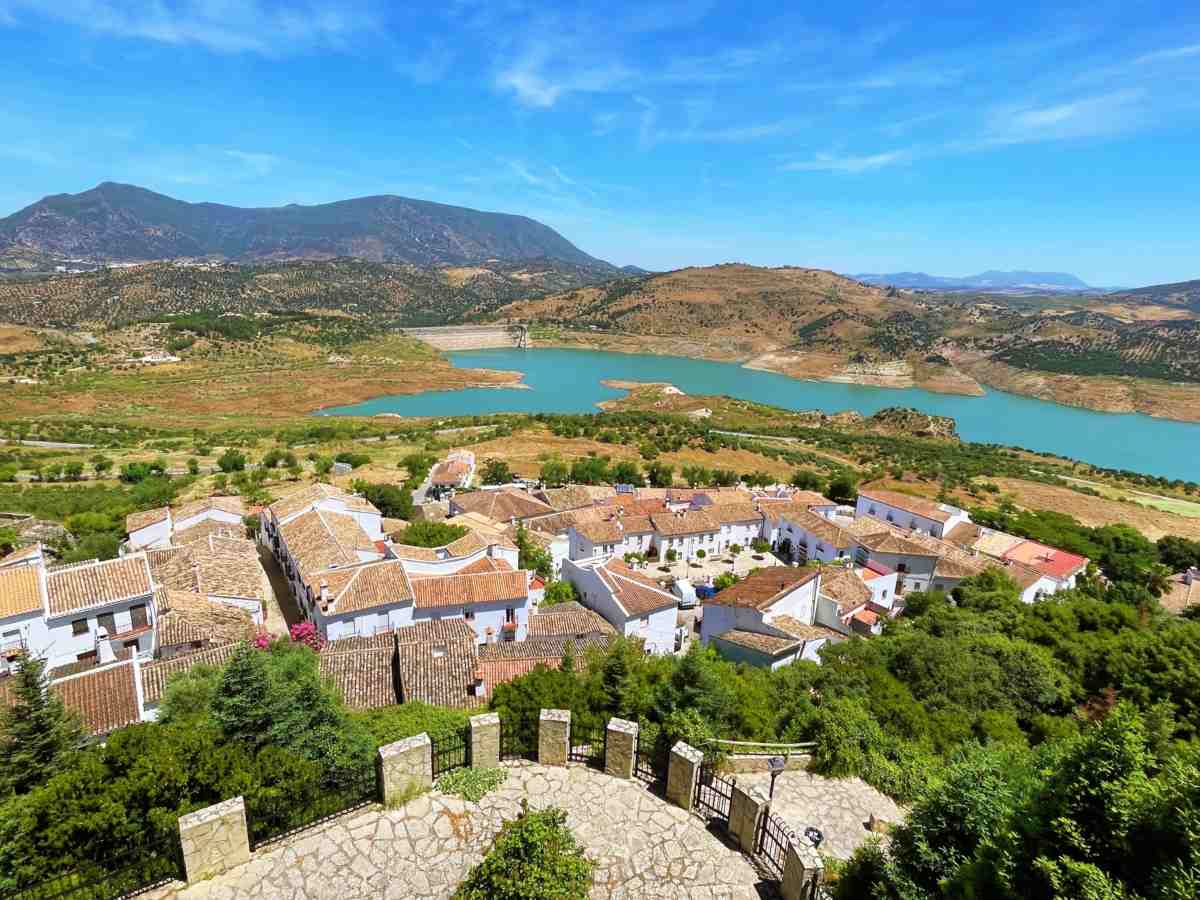
Photo By Veidehi Gite
Life at Oleum Viride moves at the unhurried pace of the Andalusian countryside. In October, olives reach their peak ripeness. Growing an olive tree from seed to full maturity in traditional, non-irrigated farms takes about 7 to 8 years. Some olive trees, believed to be around since the time of Christ, are over 2,000 years old. These ancient trees follow a unique production curve, hitting their peak olive yield at 100 to 150 years old in traditional settings. In contrast, olive trees grown with super-intensive irrigation methods need to be cut down after just 30 years. However, in the mountainous regions where traditional methods prevail, the century-old trees produce the best harvests. Lucero says, “These olive trees, often tended by our grandparents, will continue to be fruitful for our grandchildren. This cycle exemplifies the continuity of life, with most of the trees around us currently aged between 80 and 120 years.”
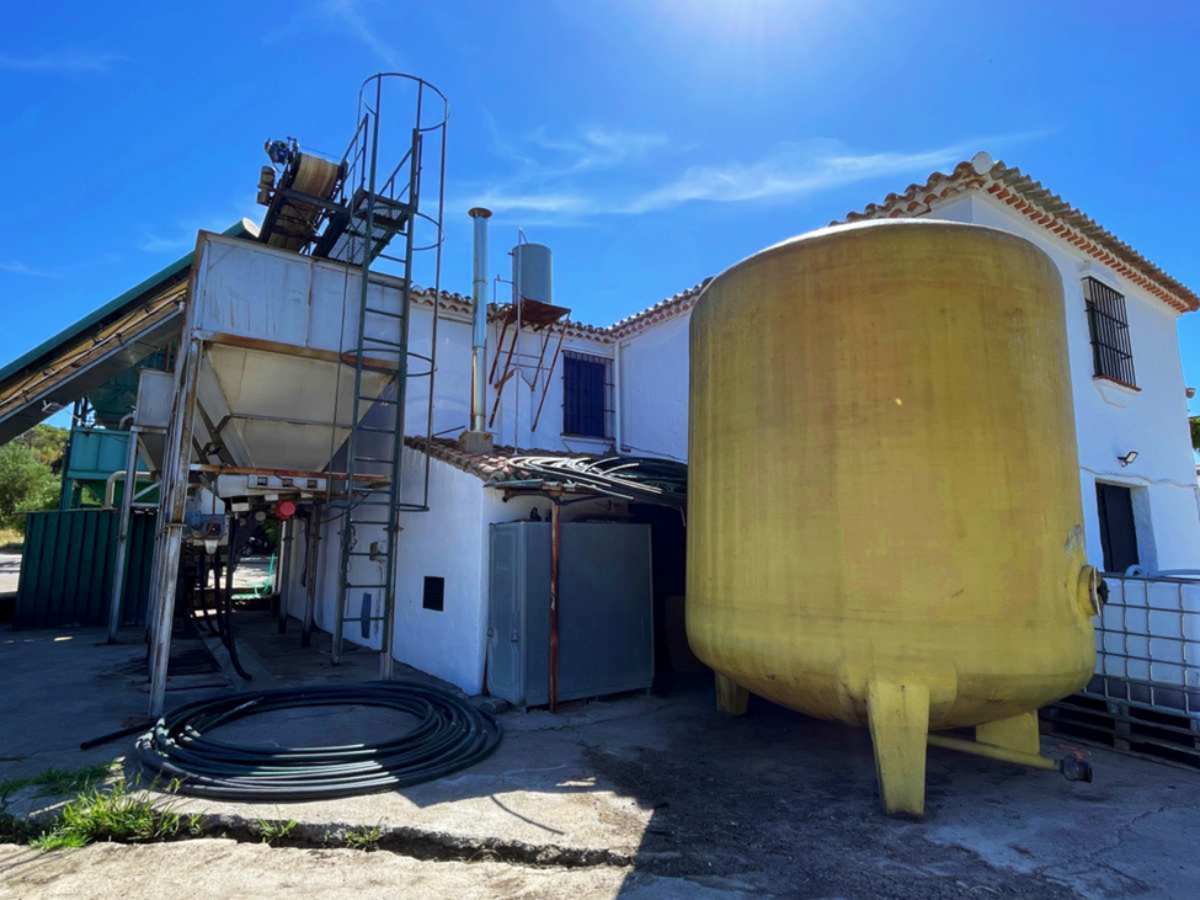
As the olives arrive, a gentle separation takes place, removing leaves and stems that don’t belong in the oil creation. Olives are then washed, weighed, and sorted according to their variety. Finally, the sorted bounty reaches the heart of the operation: the mill. Here, the olives are crushed into a coarse mush, pits included, ready for the next stage of their transformation. After the olives are crushed into a thick paste, Lucero ushers it into a high-tech centrifuge. Here, the mush is spun rapidly several times at cool temperatures. This spin cycle is key – it separates the precious extra virgin olive oil from the leftover pits and olive bits. Cooler temperatures, Lucero explains, are the secret to the oil’s superior quality. Once the swirling stops, the oil is carefully filtered. But Lucero’s job isn’t done yet. He meticulously taste tests the oil, deciding which holding tank to add it to. This ensures each batch maintains a consistent, delicious flavour profile – a point of pride for Lucero. He proudly mentions that 90% of their production is sold directly to visitors, highlighting their streamlined approach: “We bypass the need for extensive value chains. Our olive oil goes straight from us to you.” This direct connection, he emphasizes, ensures freshness and quality that discerning customers appreciate.
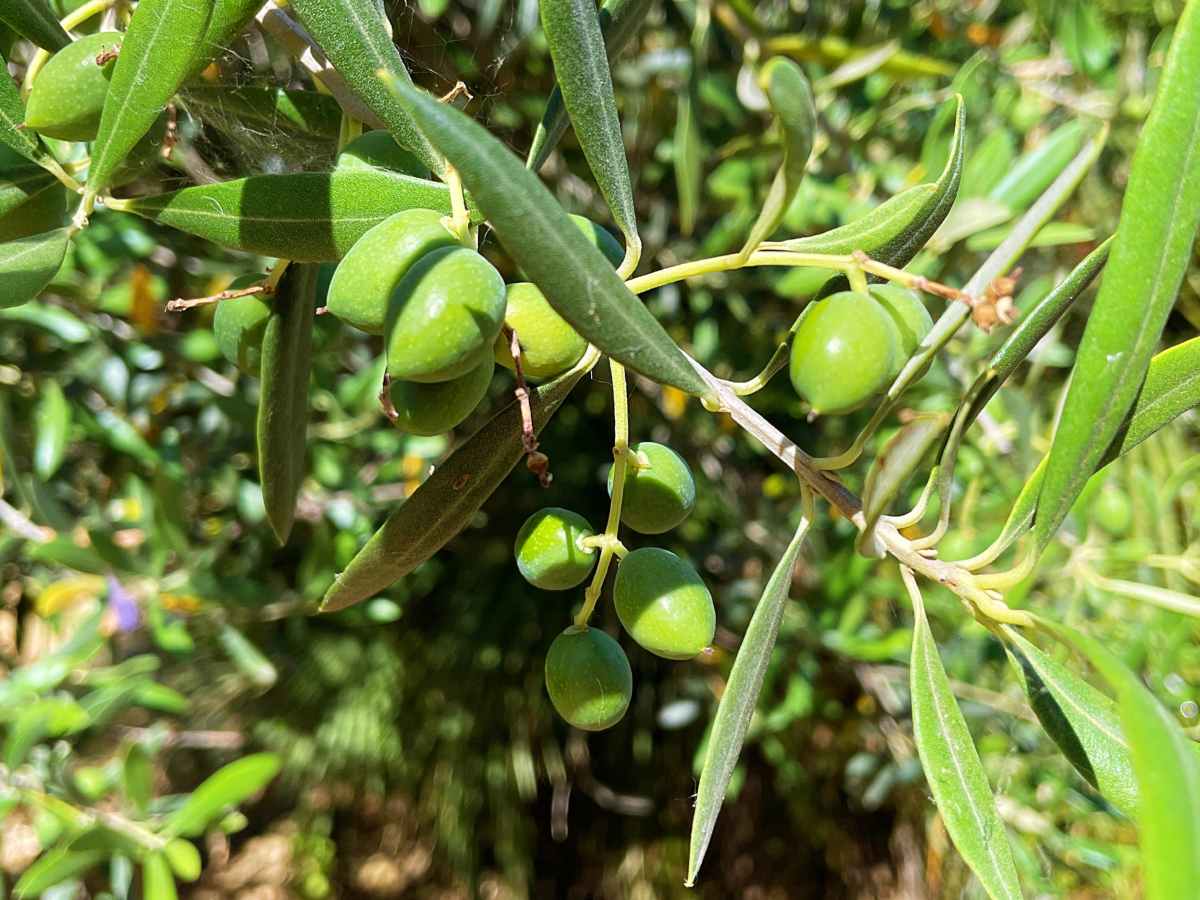
Photo By Veidehi Gite
After a fascinating tour through the production floor and the mill, we found ourselves on a scenic-covered patio with breathtaking views of the whitewashed houses of Zahara de la Sierra nestled below the imposing silhouette of a ruined castle perched on a hill. Here, Lucero cued up a short film produced by Oleum Viride itself, a concise yet informative recap of the olive oil production process we had just witnessed. With the visual storytelling fresh in our minds, Lucero transitioned us to a more sensory experience: an olive oil tasting. He debunked a common misconception right off the bat. “Professional olive oil tasters use blue glasses,” he explained, a knowing smile playing on his lips. Apparently, colour and cloudiness have nothing to do with the oil’s quality. Lucero then guided us through the proper tasting technique: letting the oil rest on our tongues, inhaling its aroma, savouring the unique flavours, appreciating its complexity and remembering childhood memories of olive oil. It was a delightful crash course in olive oil appreciation, all while bathed in the warm Spanish sun and surrounded by stunning scenery.
For breaking news and live news updates, like us on Facebook or follow us on Twitter and Instagram. Read more on Latest Dishes News on India.com.